We may receive a commission on purchases made from links.

Adam Doud/SlashGear
IFA could be called the CES of Europe (or CES could be the IFA of the U.S.). Both are spread out over a wide area, both are brimming with tech, and both will get your step counter to consider retirement. Here we are over 150,000 combined steps in and it’s finally time to say goodbye.
Advertisement
But we still had one day to crawl the floor (we’ve been crawling since day three, if we’re perfectly honest) and pick up some of the lesser-known items that you might fancy. These are not the least interesting items by any stretch. Arguably some of the items on this list are the most consequential that we’ve seen this past week.
From an AI pin that you’ll actually want to wear to a pair of glasses that will help you hear to rechargeable batteries, but not how you’re thinking, here is all the best stuff we saw on our final day of IFA.
Plaud AI Pin
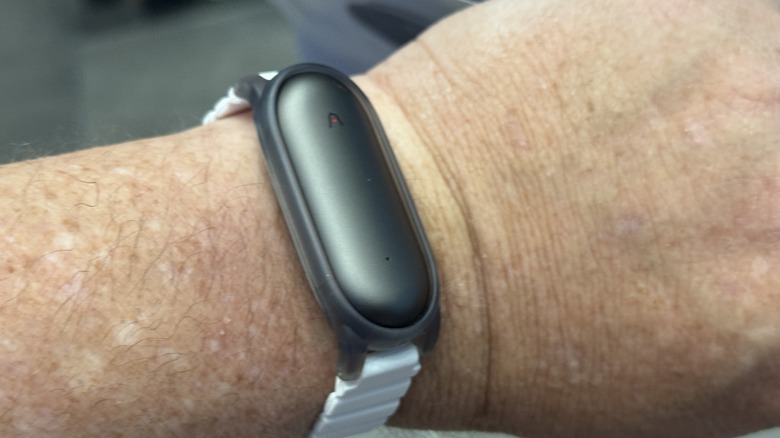
Adam Doud/SlashGear
Plaud has been around for a while now, having launched its first AI product a few months ago — the Plaud Note. It’s a voice recorder that uses Cloud AI to provide you with a transcript and summary of your conversation. At IFA, Plaid launched the Plaud AI Pin, which is a similar device in function, but not in form.
Advertisement
The Plaud AI Pin looks like a river stone with a tiny Plaud logo and LED light on the front, along with a microphone port. The Plaud AI Pin can be worn in one of four ways (and all four come in the box). You can take the metal plate off the back and magnetically attach the pin through your shirt, you can attach the magnetic clip and clip it to your shirt, you can wear it in a magnetic bracelet, or you can wear it as a necklace.
You start recording by pressing the middle of the pin — very deliberately — and stop it the same way. Launch the app, and the recordings sync to the app. Pick any of the recordings, and generate a transcript, summary, mind map and more.
Like the Plaud note, there’s a subscription service attached to it that determines the number of minutes you can transcribe per month. I used the Plaud AI Pin to record conversations at IFA and it worked pretty well. Transcriptions are a little rough on things like brand names and such (for example, it had trouble with «DJI Osmo»), but otherwise the summary is a banger of a feature. Should it just be an app? Probably. Will it do a better job that Gemini or Apple Intelligence? That remains to be seen.
Advertisement
Pale Blue batteries
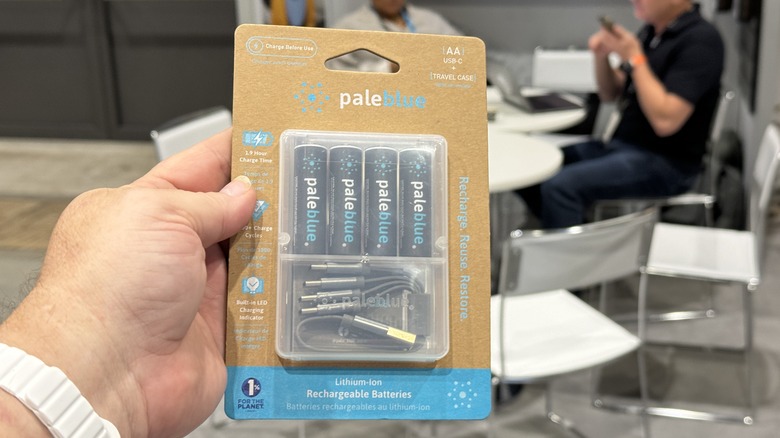
Adam Doud/SlashGear
The world has no shortage of rechargeable batteries, but the folks at Paleblue have a nifty set of rechargeable batteries that charge via USB-C. Rather than having to go out and get a rechargeable battery charger, you can just plug these batteries in using your nearest USB-A cable. The included 4-way splitter lets you charge all four batteries at once.
Advertisement
They come in packs of four and all sorts of sizes, notably AA and AAA. Plus, the batteries last as long as their non-rechargeable counterparts. Not only that, but they output power as if they were at 100% until they’re dead. What that means is there’s no fade — no weakening flashlight, or slowing down audio player, which is a nice touch. Each battery has an LED circle on the end that blinks when it’s being charged. All that is great.
But the price is not great. One four-pack of batteries is $24.99 for AAA and $29.99 for AA. If you’re one who thinks long-term, that’s not a bad price. Sure a 32-pack of batteries is around $15 on Amazon, but those are single use. The Paleblue batteries have a lifetime guarantee. They’re good for over 1,000 charges and when they finally die, you can send them in to replace them until the end of time, or until Paleblue goes out of business, whichever comes first. Plus, you’re being environmentally friendly, which is better for the planet. If you think long term, this is a no brainer, but it’s one heck of an initial investment.
Advertisement
Nuance Audio glasses
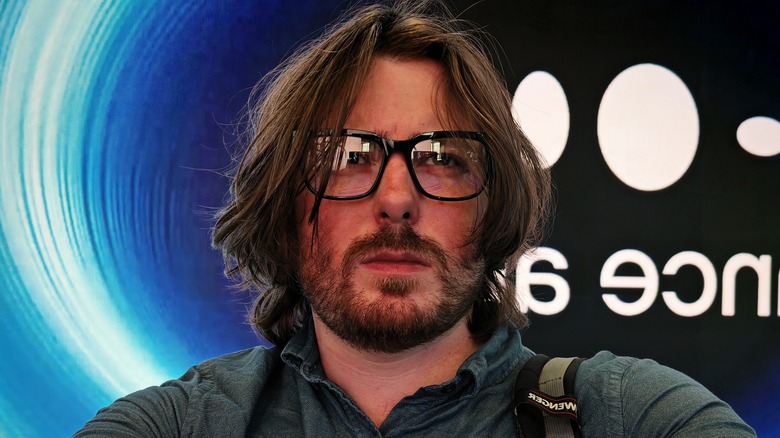
Dave McQuilling/SlashGear
You probably watched yesterday as Apple announced that its new AirPods Pro could be used as medically approved hearing aids. This is a pretty huge announcement, and fantastic news for those who have hearing loss. As it happens the next day, I found Nuance, which is a set of glasses designed to work as hearing aids, created by EssilorLuxottica — the parent company of RayBan sunglasses.
Advertisement
I first tested out the Nuance glasses back at CES and they were a little rough. After months of further development, they’re starting to work pretty well. These glasses have built in beam forming microphones that help amplify what you’re looking it so you can hear better. According to Nuance (and they told me this back at CES; they’re not aping Apple here) a disproportionately large part of the population who has hearing loss doesn’t do anything about it because of the social stigma attached to hearing aids (read: they’re for old people). So, Nuance wants to make fashion work for those who need it by integrating this technology into a normal looking pair of glasses.
Nuance is there, and the cost at around $1,100 is high, but it’s not as high as earring aids which can go into multiple thousands of dollars. Then again, it is more than a pair of AirPods Pro, so maybe Nuance needs to go back to the drawing board. Nuance frames should be launching by the end of the year, and considering EssilorLuxotica also owns a few chains of eyewear stores, you’ll see them on shelves before long.
Advertisement
Blessed are the cheesemakers

Dave McQuilling/SlashGear
Everything’s smart these days, so it’s only right we have a techy way to ease the process of cheesemaking. So forget the multiple pots, thermometers, and other cheesemaking paraphernalia — you tip the ingredients into the cheesemaker, and an app guides you through the process. This goes on for however long it takes to make the wheel of cheese, which you will admittedly have to mature in a suitable place in your home.
Advertisement
Mozzarella balls being formed generally takes a few hours, but of course it will vary depending on the type of cheese. Both the feta and goat’s cheese had a more rustic and authentic feel than the store-bought equivalents. Plus, it’s homemade, so it’s cheaper and you know exactly what’s going in there. If you want to try out making your own cheeses, a steel version of the Frommagio will set you back around $640, while the copper version costs $785. Making your own cheese can be up to 75% cheaper than buying it from a grocery store, so you could potentially save a bit of money in the long run. If all you eat is cheese.
Samsung has a house robot
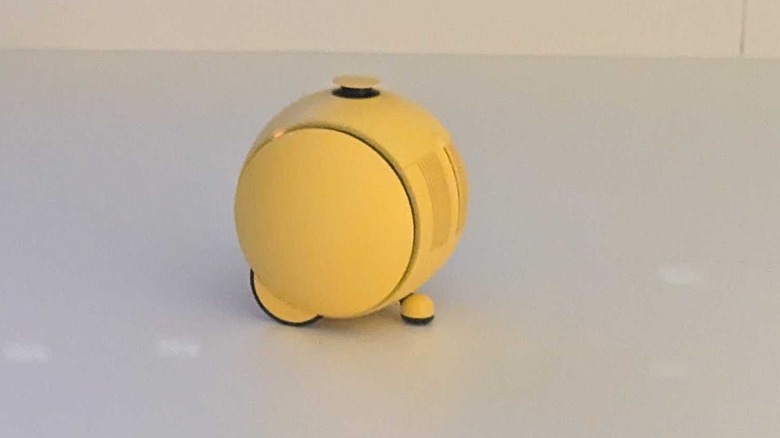
Dave McQuilling/SlashGear
Samsung didn’t unveil Ballie at IFA; it actually made its debut back in August, but it’s where many members of the press and public will have seen the company’s companion robot for the first time. The small yellow ball was on display several times a day in Samsung’s little village, and people could watch it get put through its paces.
Advertisement
There’s a slight chance Ballie might turn out to be a smaller, more endearing, but ultimately just as useless as Amazon’s near-universally panned Astro home bot. But it has a number of features that are useful enough to give it a very good chance. These include connecting all of your smart home devices, projecting things on the floor, and generally acting like a cross between a home hub and a metal and plastic pet. It’s still early days, and Ballie is still a concept, so don’t expect pricing info or a full nailed-down feature list yet. There’s always a chance it will fail as hard as Amazon’s effort. But it is one of the things that’s worth keeping an eye on in the coming months.
Nanoleaf does it again
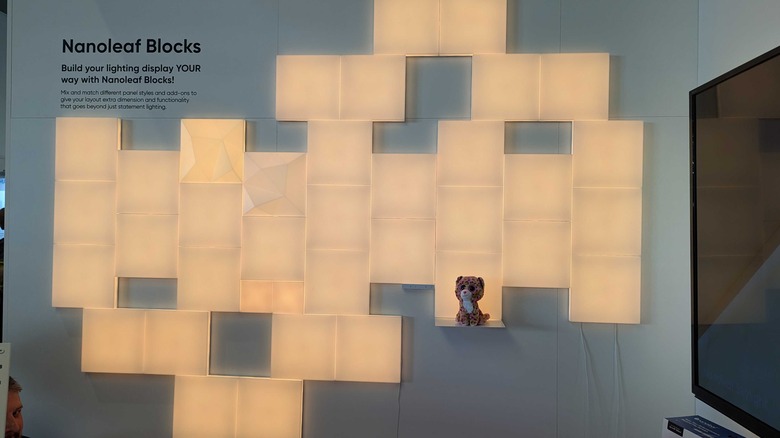
Dave McQuilling/SlashGear
You may accuse Nanoleaf of being a bit samey, We mean, they offer gamers a way to slap lights up on a wall in an elaborate way with very little effort. But the masters of flat surface illumination still manage to tweak it enough every now and then to stay justifiable.
Advertisement
The company’s big effort in IFA is Nanoleaf Blocks. They’re square flat panels that you can slap on a wall or ceiling like Nanoleaf’s other stuff. They link together seamlessly, hook up to your home network, and can be controlled with an app. Again like Nanoleaf’s other stuff. Oh and you can use that app to set it in any number of colors and patterns, some of which you can customize, just like… You get the point. They are textured a bit differently, so there is that.
We also had a little glimpse into the future too, you’ll be able to get a wood covering for each block. Just like the Nanoleaf Elements.